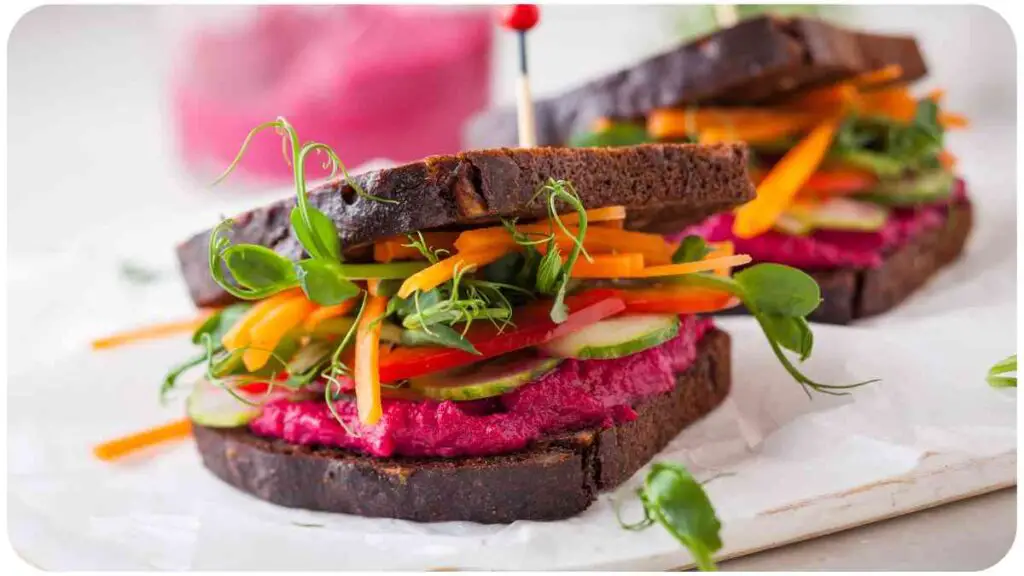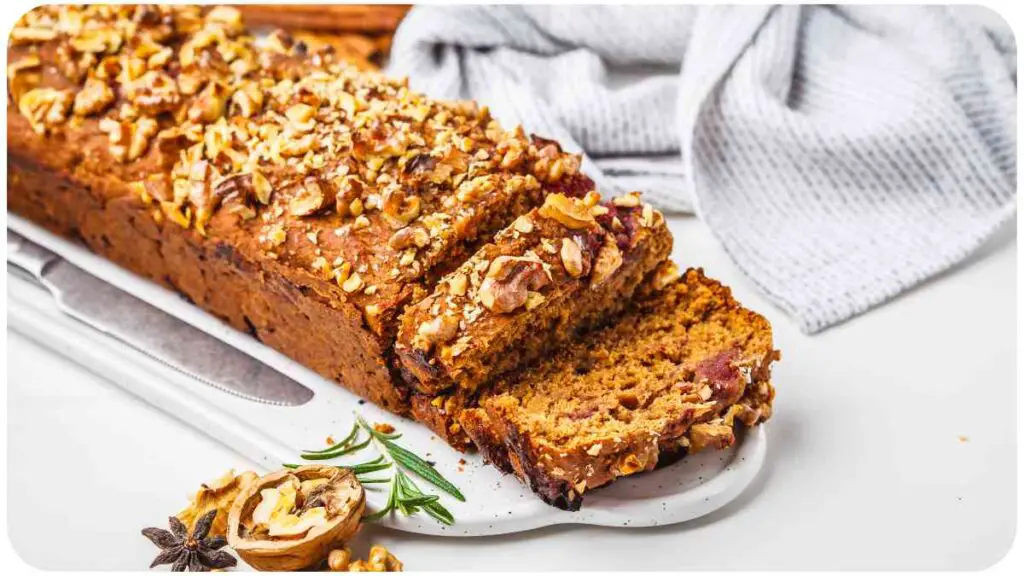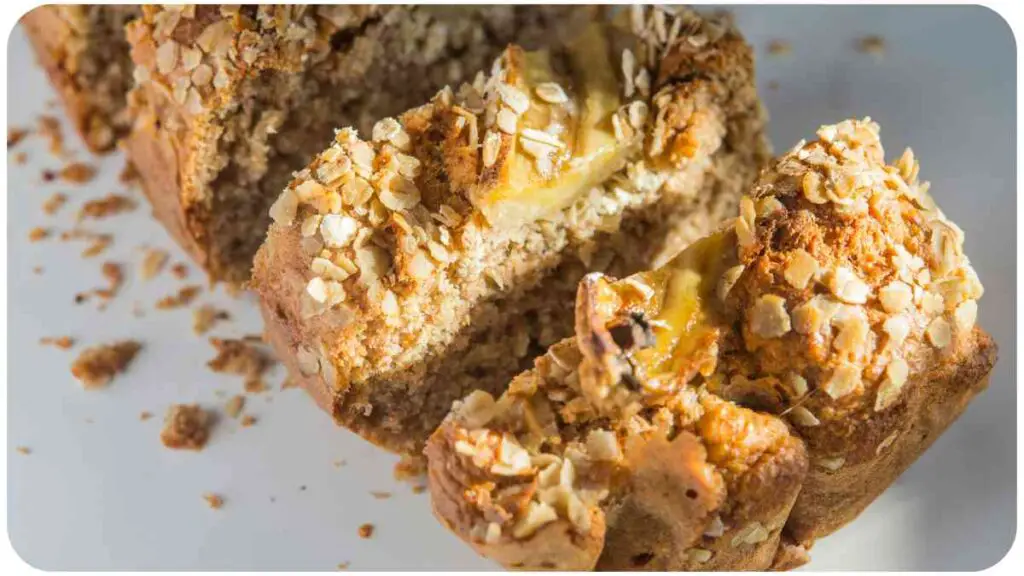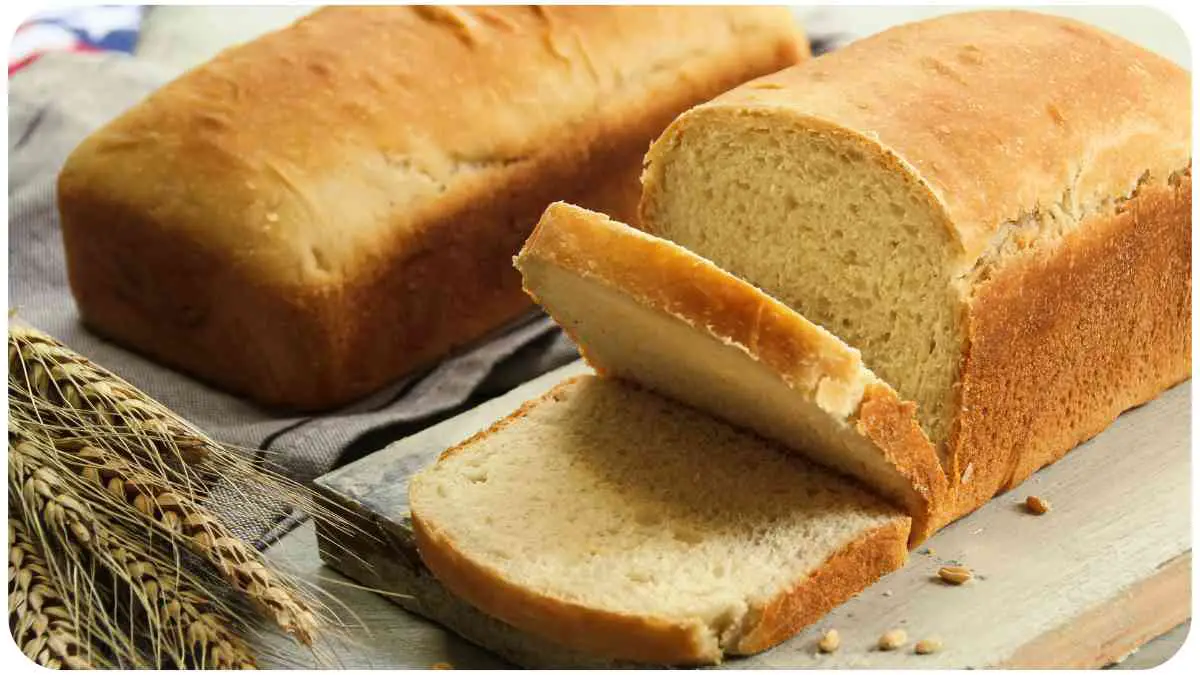When you’ve decided to embrace the vegan lifestyle, every aspect of your diet comes under scrutiny, including your daily bread. The supermarket shelves may seem filled with vegan options, but looks can be deceiving.
In this guide, we’ll explore the intricacies of vegan bread, helping you navigate through ingredient lists, decode labels, and even empower you to bake your own delicious, cruelty-free loaves.
| Takeaway |
|---|
| Understanding ingredient labels is crucial for ensuring your bread is truly vegan. |
| Vegan baking involves creative substitutions, such as flax eggs, plant-based milks, and alternative sweeteners. |
| Embrace the growing variety of vegan bread options from reputable brands and local bakeries. |
| Experiment with homemade recipes to tailor your bread to personal preferences and dietary needs. |
| Connect with the vibrant vegan baking community online to share experiences, tips, and recipes. |
| Adding seeds, nuts, and nutritional boosters can enhance the flavor and health benefits of your homemade vegan bread. |
Understanding Vegan Bread

2.1 What Makes Bread Non-Vegan?
Before diving into the specifics, let’s understand why some bread isn’t vegan. It often comes down to a few key ingredients that sneak their way into the dough, leaving unsuspecting consumers with a non-vegan slice.
Enhance your culinary skills with plant-based goodness. Discover diverse recipes and cooking techniques using wholesome plant-based ingredients for a delicious vegan experience.
2.2 Common Non-Vegan Ingredients in Bread
Table: Non-Vegan Ingredients in Bread
| Ingredient | Common Source | Vegan Alternative |
|---|---|---|
| Whey or Casein | Milk derivatives | Plant-based milk or water |
| Lard or Tallow | Animal fats | Vegetable oils or margarine |
| Honey | Bee product | Agave nectar or maple syrup |
| E-numbers | Animal-derived additives | Natural plant-based additives |
2.3 The Importance of Reading Labels
Your journey to vegan bread enlightenment begins with the label. Understanding how to decode the information on the packaging ensures that your loaf is genuinely plant-based.
Choosing the Right Flour
3.1 Vegan-Friendly Flour Options
Navigating the flour aisle can be overwhelming, but certain options guarantee a vegan-friendly foundation for your bread.
Dive into the world of non-dairy delights. Uncover the perfect vegan milk alternative with our comprehensive guide, ensuring your sips are cruelty-free and plant-powered.
3.2 Potential Non-Vegan Additives in Flour
Table: Additives in Flour
| Additive | Purpose | Vegan Alternative |
|---|---|---|
| L-cysteine | Dough conditioner | Enzymes, ascorbic acid, or vegetable oils |
| Bleaching agents | Whitening flour | Unbleached flour |
| Azodicarbonamide | Improving dough elasticity | Vinegar and baking soda |
The Sneaky World of Additives
4.1 Emulsifiers and Dough Conditioners
Many non-vegan breads contain emulsifiers and dough conditioners derived from animals. These additives play a crucial role in improving the texture and shelf life of bread but often go unnoticed by consumers.
Table: Emulsifiers and Dough Conditioners
| Additive | Purpose | Vegan Alternative |
|---|---|---|
| Mono- and diglycerides | Emulsifiers | Plant-based emulsifiers, like sunflower lecithin |
| Lecithin | Improves dough consistency | Soy or sunflower lecithin |
| DATEM (Diacetyl Tartaric Acid | Strengthens dough and enhances texture | Vinegar-derived monoglycerides, enzymes |
4.2 Sweeteners and Vegan Alternatives
Sweeteners can be a hidden culprit in non-vegan bread. Traditional sweeteners like honey are not vegan-friendly, but alternatives abound.
Table: Sweeteners and Vegan Alternatives
| Sweetener | Common Source | Vegan Alternative |
|---|---|---|
| Honey | Bee product | Agave nectar, maple syrup |
| Lactose | Milk sugar | Plant-based sweeteners, like stevia |
4.3 Natural vs. Artificial Flavors
Understanding the source of flavors is vital for vegans. While natural flavors are generally plant-derived, artificial flavors may have animal origins.
Elevate your baking game sans animal products. Explore our comprehensive guide to vegan baking substitutes, ensuring your treats are sweet, ethical, and cruelty-free.
Table: Flavorings in Bread
| Flavoring | Source | Vegan Alternative |
|---|---|---|
| Natural flavors | Plant-derived | Verify with manufacturers |
| Artificial flavors | May contain animal products | Verify with manufacturers |
Navigating the Yeast Conundrum

5.1 Common Yeast Varieties
Yeast is a fundamental ingredient in bread-making, but not all yeast is created equal. Some varieties may involve animal products in the cultivation process.
5.2 Vegan-Friendly Yeast Brands
Table: Vegan-Friendly Yeast Brands
| Yeast Brand | Vegan Certification | Availability |
|---|---|---|
| Red Star | Vegan and Kosher certified | Widely available in major grocery stores |
| Fleischmann’s | Vegan-friendly (Check packaging) | Commonly found in most supermarkets |
Crucial Label Reading Tips
6.1 Decoding Ingredient Lists
Understanding how to interpret ingredient lists is a key skill for every vegan shopper. Companies often use scientific names or codes for additives, making it crucial to be well-versed in the language of labels.
Nourish your body with plant-powered insights. Unravel the mysteries of vegan nutrition through our comprehensive guide, ensuring a balanced and wholesome plant-based lifestyle.
Table: Common Ingredient Codes
| Code | Ingredient |
|---|---|
| E322 | Lecithin |
| E471 | Mono- and diglycerides |
| E920 | L-cysteine |
| E300 | Ascorbic acid (Vitamin C) |
| E927b | Carbamide (Urea) |
6.2 Understanding Allergen Statements
Allergen statements provide crucial information about potential allergens in the product. While allergen warnings are not directly related to veganism, they can help you identify non-vegan ingredients.
Table: Common Allergen Warnings
| Allergen Warning | Possible Non-Vegan Ingredient |
|---|---|
| Contains Milk | Lactose, whey, casein |
| Contains Honey | Honey |
| Contains Eggs | May indicate non-vegan additives |
| May Contain Traces | Cross-contamination risk |
6.3 Hidden Animal Derivatives
Some ingredients may not be immediately recognized as animal-derived. Being aware of these less obvious additives can help you make informed choices.
Table: Hidden Animal Derivatives
| Ingredient | Source |
|---|---|
| Glycerides | Can be plant or animal-derived |
| Stearic Acid | Typically from animal fats |
| Vitamin D3 | Often sourced from lanolin (sheep’s wool) |
Top Vegan Bread Brands
7.1 Reviewing Popular Vegan Bread Options
If you’re not up for baking your own bread, several vegan-friendly brands offer delicious options. Here are some top picks that cater to your cruelty-free lifestyle:
Fuel your athletic journey with plant-based power. Gain insights into the vegan food pyramid for athletes to optimize performance and health on your plant-fueled path.
Table: Top Vegan Bread Brands
| Brand | Notable Features | Available Varieties |
|---|---|---|
| Dave’s Killer Bread | Organic, Non-GMO, Seed-rich | White, Whole Grain, Rye, Multigrain |
| Ezekiel 4:9 Bread | Sprouted grains, High in protein | Sprouted Whole Grain, Cinnamon Raisin |
| Rudi’s Organic Bakery | Organic, No artificial additives | Multigrain, Ciabatta, White |
| Alvarado Street Bakery | Organic, Sprouted, Non-GMO | Sprouted Wheat, Sourdough, Bagels |
7.2 Making Informed Choices at the Grocery Store
When shopping for vegan bread, be sure to check the labels and allergen statements. Additionally, explore the organic and health food sections of your local grocery store, as they often carry a broader selection of vegan options.
DIY Vegan Bread Recipes

8.1 Simple Vegan Bread Recipe
Creating your own vegan bread is a rewarding experience. Here’s a straightforward recipe for a basic vegan loaf:
Table: Simple Vegan Bread Recipe
| Ingredients | Instructions |
|---|---|
| 3 cups all-purpose flour | 1. In a large bowl, combine flour, yeast, and salt. |
| 2 teaspoons instant yeast | 2. Add warm water and mix until a dough forms. |
| 1 teaspoon salt | 3. Knead the dough on a floured surface for 8-10 minutes. |
| 1 ½ cups warm water | 4. Place the dough in a greased bowl, cover, and let it rise for 1-2 hours. |
| 5. Punch down the dough, shape it into a loaf, and place it in a greased pan. | |
| 6. Allow the dough to rise again for 30-45 minutes. | |
| 7. Preheat the oven to 375°F (190°C). | |
| 8. Bake the bread for 25-30 minutes, or until golden brown. |
8.2 Gluten-Free Vegan Bread Alternative
For those with gluten sensitivities, this gluten-free vegan bread recipe is a delightful alternative:
Table: Gluten-Free Vegan Bread Recipe
| Ingredients | Instructions |
|---|---|
| 2 cups gluten-free flour | 1. Preheat the oven to 350°F (175°C). |
| 1 cup almond flour | 2. In a large bowl, mix together gluten-free flour, almond flour, baking powder, and salt. |
| 1 teaspoon baking powder | 3. In a separate bowl, whisk together flaxseed meal and warm water. Let it sit for 5 minutes to form a flax egg. |
| 1/2 teaspoon salt | 4. Add the flax egg, almond milk, maple syrup, and apple cider vinegar to the dry ingredients. Mix until well combined. |
| 1/4 cup flaxseed meal | 5. Transfer the batter to a greased loaf pan. Smooth the top with a spatula. |
| 1/2 cup warm water | 6. Bake for 40-45 minutes or until a toothpick inserted into the center comes out clean. |
| 1 cup almond milk | 7. Allow the bread to cool in the pan for 10 minutes before transferring it to a wire rack to cool completely. |
| 2 tablespoons maple syrup | |
| 1 tablespoon apple cider vinegar |
8.3 Adding Nutritional Value to Your Homemade Loaf
Enhance the nutritional profile of your homemade vegan bread by incorporating seeds and nuts:
Table: Nutritional Boosters for Vegan Bread
| Ingredient | Nutritional Benefits |
|---|---|
| Chia seeds | Omega-3 fatty acids, fiber, and protein |
| Sunflower seeds | Vitamin E, magnesium, and selenium |
| Flaxseeds | Omega-3 fatty acids and lignans |
| Walnuts | Omega-3 fatty acids and antioxidants |
| Pumpkin seeds | Iron, zinc, and magnesium |
Adding these ingredients not only enhances the flavor but also provides a wholesome boost to your homemade vegan bread.
Baker’s Insights
9.1 Challenges in Vegan Bread Production
As a professional baker deeply committed to vegan practices, I’ve encountered several challenges in producing vegan bread that meets both taste and texture expectations. One major hurdle is achieving the desired fluffiness without the use of dairy-derived ingredients. Overcoming this obstacle often involves experimenting with various plant-based emulsifiers and carefully balancing moisture levels.
9.2 Success Stories from Vegan Bakeries
On a brighter note, the rise of vegan bakeries worldwide showcases the success achievable in crafting delectable vegan bread. Bakeries like “PlantJoy Bakes” and “VeganRise Bakery” have not only mastered the art of vegan baking but have also built thriving communities of dedicated customers. Their success stories highlight the increasing demand for high-quality, plant-based alternatives.
9.3 Expert Tips for Baking Vegan Bread at Home
Table: Expert Tips for Baking Vegan Bread
| Tip | Description |
|---|---|
| Use plant-based milk and fats | Opt for almond milk, soy milk, or coconut oil instead of dairy counterparts. |
| Experiment with flax eggs | Flax eggs (flaxseed meal + water) are excellent egg substitutes in vegan baking. |
| Embrace sourdough | Sourdough fermentation enhances flavor and texture in vegan bread. |
| Incorporate nut and seed flours | Almond, coconut, or flaxseed flour adds nutritional value and enhances the crumb structure. |
| Test different egg replacements | Try applesauce, mashed bananas, or aquafaba for moisture and binding. |
Community Q&A
10.1 Addressing Common Reader Questions
Now, let’s address some common questions from our readers regarding vegan bread:
Q: Is yeast always vegan?
A: While yeast itself is typically vegan, some production processes may involve animal products. Look for yeast brands with vegan certifications or check the packaging for clarity.
Q: Can I find vegan bread at regular grocery stores?
A: Yes, many mainstream grocery stores now offer a variety of vegan bread options. However, it’s crucial to read labels carefully.
Q: What’s the best flour for making vegan bread at home?
A: Opt for unbleached all-purpose flour or experiment with whole wheat, spelt, or oat flour for added nutritional benefits.
Q: Are there any vegan artisan bread options?
A: Absolutely! Many artisan bakeries now specialize in crafting vegan bread, often using traditional methods and high-quality ingredients.
10.2 Engaging with the Vegan Baking Community
Engaging with the vegan baking community can be a rewarding experience. Here are some ways you can connect with like-minded individuals and share your passion for vegan bread:
Table: Ways to Engage with the Vegan Baking Community
| Engagement Method | Description |
|---|---|
| Join online forums | Platforms like Reddit and vegan baking forums are excellent for seeking advice and sharing experiences. |
| Attend local meet-ups | Check for local vegan or plant-based meet-ups where you can connect with fellow bakers. |
| Participate in social media challenges | Instagram and Twitter often host baking challenges that encourage community participation. |
| Share your recipes | Contribute to online recipe databases or start a blog to share your favorite vegan bread recipes. |
Conclusion
Ensuring your loaf is truly vegan involves a combination of label-reading skills, understanding common pitfalls, and sometimes taking matters into your own hands by baking at home. By embracing the insights shared in this guide, you’re better equipped to make informed choices and savor the delicious world of vegan bread.
Whether you opt for store-bought options or dive into the joy of homemade baking, the key is to enjoy the journey and savor every cruelty-free bite.
Further Reading
- The Life-Changing Loaf of Bread: Delve into the transformative world of bread-making with this life-changing loaf recipe. Discover a new perspective on ingredients and techniques that can revolutionize your approach to baking.
- Garden Harvest Vegetable Bread Loaf: Explore the vibrant and flavorful realm of vegetable-infused bread with this garden harvest recipe. Learn how to incorporate garden-fresh produce into your loaves for a delightful twist.
- Gluten-Free Vegan Bread: If you’re navigating the world of gluten-free vegan bread, this resource is a must-read. Uncover tips and tricks for achieving the perfect texture and taste in your gluten-free, plant-based loaves.
FAQs
How can I ensure the bread I buy is vegan?
Ensure the bread is labeled as vegan, and carefully read the ingredient list, checking for any non-vegan additives like milk, honey, or animal-derived emulsifiers.
What are common vegan egg substitutes in bread recipes?
Popular vegan egg substitutes in bread recipes include flax eggs (flaxseed meal + water), applesauce, mashed bananas, and aquafaba.
Can I find vegan artisan bread options?
Yes, many artisan bakeries specialize in crafting vegan bread, offering a variety of traditional and unique options.
What is the difference between natural and artificial flavors in bread?
Natural flavors are typically plant-derived, while artificial flavors may have animal origins. Checking with manufacturers for clarity is recommended.
Are there gluten-free options for vegan bread?
Absolutely! Gluten-free vegan bread recipes often use a combination of alternative flours like almond flour, rice flour, or sorghum flour.

Hi! My name is Hellen James, and I’m a vegan lifestyle enthusiast. I’ve been living the vegan lifestyle for over 10 years now, and it’s been one of the best decisions I’ve ever made. The food is amazing, the community is incredible, and there’s no way I could go back after experiencing all this firsthand.

